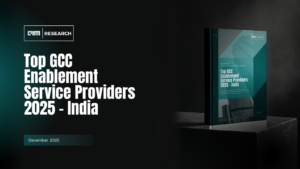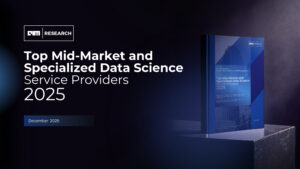In 2024, organizations prioritize leveraging AI and analytics to enhance customer experiences through personalized interactions and predictive insights. Maximizing revenue streams by monetizing data assets through innovative product offerings, targeted marketing, and strategic partnerships remains a key focus. Simultaneously, there’s an emphasis on establishing robust data governance frameworks and ethical AI practices to maintain trust, compliance, and mitigate risks associated with data privacy and bias. This entails implementing measures for data quality assurance, transparency, and accountability throughout the AI lifecycle. Additionally, organizations seek to drive operational efficiency and innovation through AI-driven automation, optimizing processes and workflows across various functions. These strategic priorities collectively aim to foster a data-driven culture, unlocking new opportunities for growth and competitive advantage.
We had a roundtable discussion on the topic with a set of experienced and distinguished leaders in the industry. The session was moderated by Bala Chandrasekaran, along with panelists Padmanabh Padiyar, Executive Director – (Head) Transformation at OCBC Bank, Vanitha D’Silva, AVP Data Science and Strategy at Sigmoid, Raghavendra Prasad Munikrishna, Vice President – Data Engineering & Analytics at JP Morgan and Amit Gupta, Vice President, AI, Advanced Analytics and CVM at e&.
AI Integration: Strategic Focus and People-Centric Approach
Our focus is to develop products that are the most relevant to our customer’s needs, giving them the best-personalized experiences, offers, and interactions they have when they deal with the bank. Protecting customers from fraud and being able to detect scams in a timely manner is another key area of focus.
We also put a lot of emphasis on opportunities that help drive employee productivity. The focus is on building tools that augment employees’ efforts in reducing effort on mundane tasks so they can spend time on higher value-adding tasks. We achieve this by building purpose-bound copilots that help everyone in the bank with the most common tasks like ideation, drafting content, translating content, turning speech into text, summarizing documents, etc.
My key takeaway in the last year has been that while there’s a common notion of integrating AI into everything, it’s crucial to center AI around people. When AI is focused on enhancing people’s experiences, you can truly get the most value for your investment. So, that’s something we should prioritize and focus on moving forward.
– Padmanabh Padiyar, Executive Director – (Head) Transformation at OCBC Bank
Enhancing AI Integration: Leveraging New Data Sources
What we now have is a way to utilize new data sources, previously disparate, which we were unable to use before. There are techniques that we can now leverage to gain more insights. What becomes more critical in this scenario is data quality and data management aspects, and how we build the entire ecosystem to be scalable and optimized. This ensures that the data is accurate and that our insights make sense. We are all aware of the challenges we face with AI, such as hallucination and the data-hungry nature of algorithms, which means that any inaccurate data can be magnified. The objective remains the same: to utilize new tools and technologies to our advantage, giving us access to more potential. It becomes increasingly critical to optimize and scale the entire solution accordingly.
I think resourcing is always a challenge in our industry. One pretty cool thing I’ve noticed is that many people, right from those in college, are playing around with LLM algorithms. They come with knowledge of Python and have experimented with various cloud platforms as well. Often, when we engage with individuals from campuses, many of them have had some sort of startup experience related to an AI product while they were incubated on campus itself. So, I think it’s a very interesting time; you’re not really starting from a blank slate.
– Vanitha D’Silva, AVP Data Science and Strategy at Sigmoid
Enhancing Banking Value through Data Governance
The core essence is having good quality data governance in place so that anything built on top of it delivers the expected outcome rather than providing hallucinated outputs. Within banks, just like insurance, there is a huge data quality challenge. Along with this challenge, there are also isolated data ecosystems that don’t communicate with each other. For example, large banks have different isolated islands of data. When sharing data becomes challenging, it becomes even more critical to have good quality data within these islands. Eventually, when exposed externally, it provides valuable insights.
There are two aspects of value creation here. Firstly, ensuring that risks are completely manageable within the bank from both data and technology aspects. Secondly, if there are risks, having plans in place to mitigate them. Ultimately, everything revolves around data within the bank, which is not just a product being sold. Data circulates within the bank and provides inherent value, whether it’s through enhancing customer experience or increasing revenue for existing products. It all boils down to deriving value from existing products as well as creating new products for end customers.
– Raghavendra Prasad Munikrishna, Vice President – Data Engineering & Analytics at JP Morgan
Maximizing AI Adoption in Organizations
While organizations across industries recognize the transformative power of AI, a crucial question lingers: are current investments enough to bridge the gap between hype and actual business impact? The answer, unfortunately, is no. Treating AI as a mere technology purchase won’t suffice. Instead, consider it a “startup” within your organization, requiring sustained investment in three key areas: people, technology, and culture.
Firstly, people are the bedrock of successful AI adoption. Upskilling your workforce and building internal mentorship programs are crucial. Remember, AI isn’t about replacing jobs, but empowering people to collaborate with intelligent tools.
Secondly, investing in the right technology infrastructure is essential. Evaluate your current IT capabilities and consider cloud-based solutions for scalability and flexibility. But remember, technology alone isn’t enough. You need high-quality, clean data to fuel your AI models. Utilize existing data strategically, even monetizing it when possible, to support further initiatives.
Thirdly, cultivate a culture of innovation, experimentation, and open communication. Encourage dialogue across departments, fostering a shared understanding of AI’s potential and addressing concerns openly. Celebrate learning from failures and iterate based on results.
Think small, start slow. Choose pilot projects with clear goals and measurable outcomes, focusing on solving real-world challenges that deliver tangible business value. Remember, measuring and communicating AI’s impact through success stories builds confidence and encourages wider adoption.
Investing ahead of the curve isn’t just about technology; it’s about nurturing an AI-ready workforce and embedding a culture of innovation. Share success stories internally and externally, fostering a positive word-of-mouth effect and inspiring others.
By approaching AI as a long-term commitment, organizations can bridge the investment gap and unlock its true potential: driving innovation, improving efficiency, and achieving sustainable growth across all verticals. This isn’t a sprint, it’s a marathon. Invest wisely, cultivate the right culture, and witness the transformative power of AI unfold.
– Amit Gupta, Vice President, AI, Advanced Analytics and CVM at e&
Data-Centric Approach and Talent Management Challenges
I believe it all boils down to good quality use cases that one can work on. They need to be clearly defined with properly aligned goals and a roadmap on how to achieve them.
One aspect of my work focuses heavily on culture. It involves constantly going back and educating people about data, the value it adds, and how everyone needs to look at data from a certain perspective. It’s important to understand that data is not just there for instant gratification and it’s a long term asset to be continuously sweated.
I mean, resourcing and employee attrition, that’s something that has always been at the forefront of how we have been looking at things. One aspect is having a cross-functional skill set, with someone or a few possessing very strong domain skills. Additionally, diversity in terms of the talent pool becomes very important when it comes to data science. It’s easy to say, but very hard to actually execute within the organization. Convincing leaders to ‘let go’ of sacred spaces and explore new spaces is very difficult, especially when there is a limited talent pool available.
– Bala Chandrasekaran





